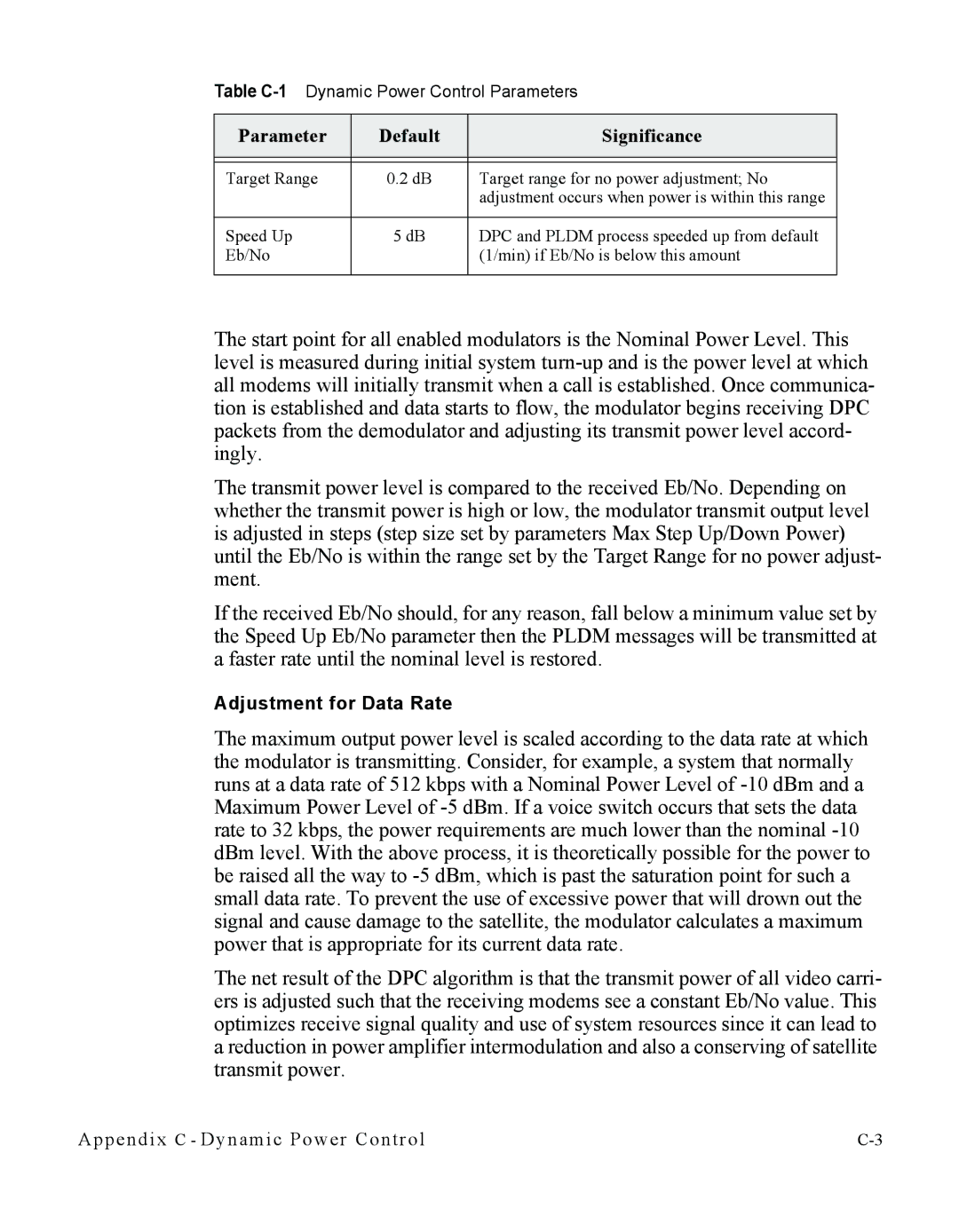Table
Parameter | Default | Significance |
|
|
|
|
|
|
Target Range | 0.2 dB | Target range for no power adjustment; No |
|
| adjustment occurs when power is within this range |
|
|
|
Speed Up | 5 dB | DPC and PLDM process speeded up from default |
Eb/No |
| (1/min) if Eb/No is below this amount |
|
|
|
The start point for all enabled modulators is the Nominal Power Level. This level is measured during initial system
The transmit power level is compared to the received Eb/No. Depending on whether the transmit power is high or low, the modulator transmit output level is adjusted in steps (step size set by parameters Max Step Up/Down Power) until the Eb/No is within the range set by the Target Range for no power adjust- ment.
If the received Eb/No should, for any reason, fall below a minimum value set by the Speed Up Eb/No parameter then the PLDM messages will be transmitted at a faster rate until the nominal level is restored.
Adjustment for Data Rate
The maximum output power level is scaled according to the data rate at which the modulator is transmitting. Consider, for example, a system that normally runs at a data rate of 512 kbps with a Nominal Power Level of
The net result of the DPC algorithm is that the transmit power of all video carri- ers is adjusted such that the receiving modems see a constant Eb/No value. This optimizes receive signal quality and use of system resources since it can lead to a reduction in power amplifier intermodulation and also a conserving of satellite transmit power.
Appendix C - Dynamic Power Control |
